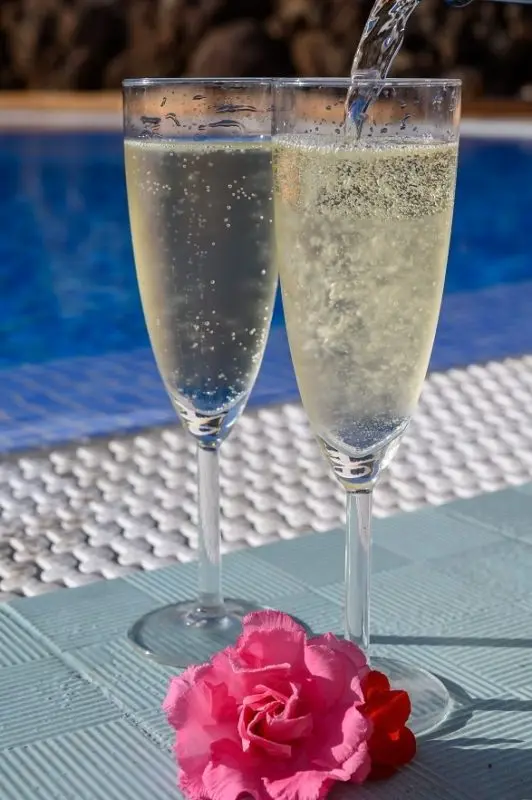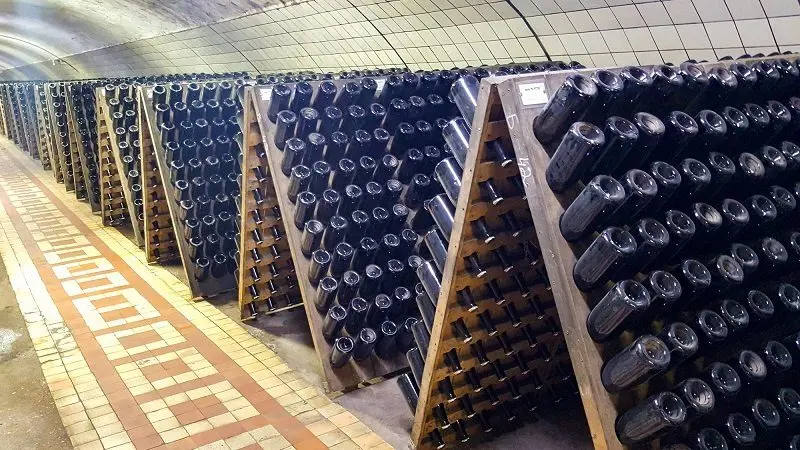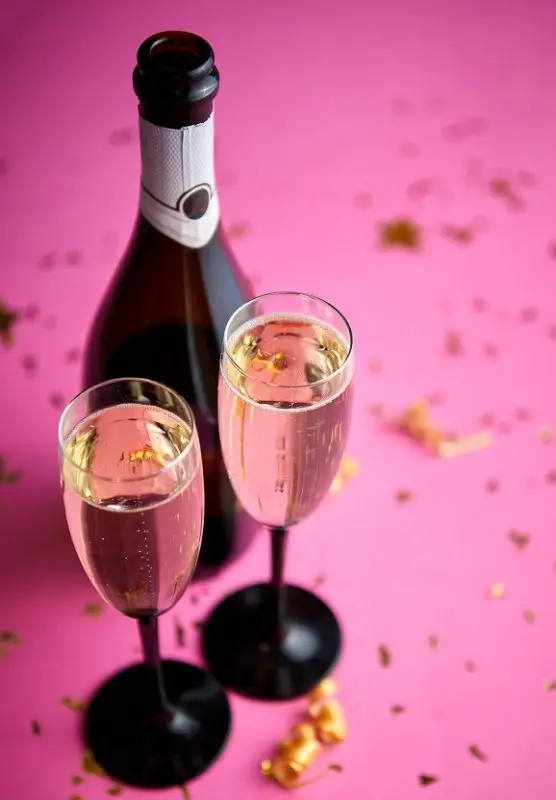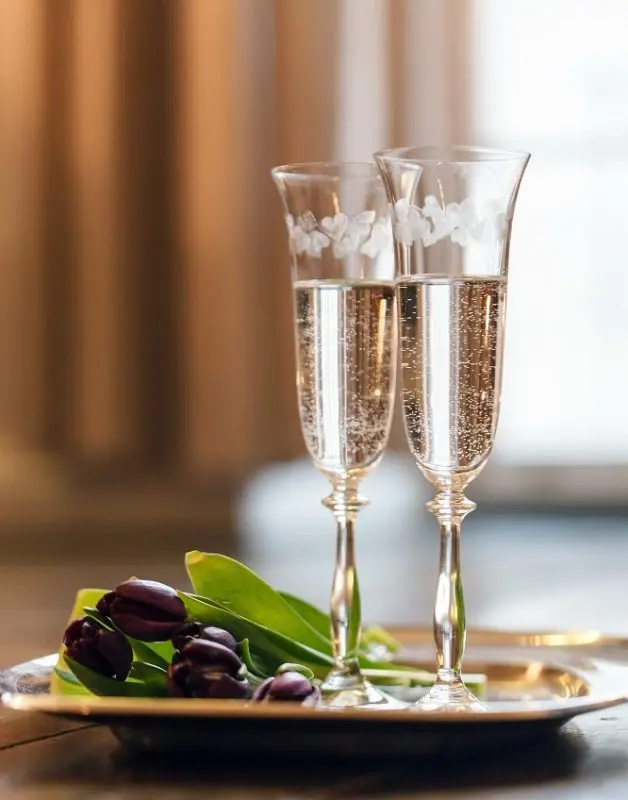Contents
For a resident of the post-Soviet space, the name “kava” in relation to wine sounds a little strange, in most Slavic languages this word means “coffee”. In fact, the name of the drink comes from the Spanish (or rather, Catalan) “cava” – “cellar”. It was there, in cool and dark wineries almost 150 years ago, that the first “Spanish champagne” appeared.
The classic taste of cava is light, fruity and floral, with citrus accents. This base can be complemented with various shades: smoky notes, menthol flavor, nuances of nuts, raspberries and spices.

Historical information
One day, young Don José Raventos, the owner of the respected Codorniu winery, founded in 1551, set off to travel around Europe. See people, show yourself, offer your honest “quiet” wine to foreign connoisseurs. Having visited the province of Champagne, the winemaker was so delighted with the original taste of carbonated wine that he decided to reproduce the champagne exactly at home in Spain.
The idea was only partially successful: in the homeland of Jose, the grape varieties Pinot Noir, Pinot Meunier and Chardonnay required by the recipe did not grow. The legend says that the enterprising owner simply took the first three varieties that came to hand, and the combination turned out to be so successful that it is still considered a reference. Be that as it may, in 1872 the first bottle of cava was produced in Catalonia, and the raw material for it was Macabeo, Charello and Parellada grapes.
At first, the producers strictly adhered to the French methodology, but over time they realized that there is already one champagne in the world, there will not be a second one – and it is not required. Rather than repeating a foreign prototype, it is better to create something of your own, no worse. This is how cava sparkling wine acquired its current look and status.
Production technology
The production technology is based on the classical method. First you need to harvest – only the most ripe berries, plucked by hand, are suitable for real cava. Then the juice of the first pressing is placed in tanks (reservoirs), where the primary fermentation (fermentation) takes place. The resulting wine material is bottled, wine yeast, sugar and – sometimes – grape juice are added, closed with a temporary cork and stored in cellars. After a few months, the sugar completely dissolves and secondary fermentation begins.

To rid the drink of yeast sediment, it is required to carry out remuage and disgorgement. The bottle is carefully turned upside down and the inclined part is frozen. Then the vessel is returned to its original position, the temporary stopper is removed, and the internal pressure pushes out the sediment that has collected in the neck. The purified wine is closed again, now with a cork stopper, and again hidden in the cellar, where it will have to “reach” the condition for several more months.
This is what traditional technology looks like, but some manufacturers simply “pump” the drink with carbon dioxide. Such a wine cannot be called either elite or simply high-quality – this way you can only get a cheap analogue of real sparkling wine, with a meager bouquet and reduced quality characteristics.
Types of coffee
Spanish cava wine is predominantly white, but rosé varieties are also found, although they are a vast minority in percentage terms. By aging, this sparkling drink is of the following types:
- Cava – aging from 9 months;
- Cava Reserva – aging from 15 months;
- Cava Gran Reserva – 30 months aging.
By the amount of sugar, kava can be anything: from Brut Nature (sugar is not added) to Dulce (sugar content exceeds 50 g / l).

In addition to the three classic grape varieties, the blend can also include Chardonnay, Malvasia, Garnacha, Monastrell and other flavors – it all depends on the manufacturer and his author’s vision.
Top manufacturers
quail – the most famous and classic producer of cava. It was to this winemaking house that Don José Raventos belonged, the sparkling wine of the company has repeatedly taken gold at international exhibitions, and even the French have repeatedly recognized that Codorniu cava is in no way inferior to champagne. 10% of all Spanish cava is produced here, so the choice is wide, but an inexperienced gourmet should start their acquaintance with the drink with the famous Codorniu Pinot Noir wine.
Freizenet. The second most famous manufacturer of “Spanish champagne”. The highlight of the house is that they work only with autochthonous (local) grape varieties, so it is believed that this is where you can taste the reference cava, as it should be. The most famous wine “Freshenet” – Carta Nevada. Three classic grape varieties are aged in equal proportions, 33% each, without impurities and additives. Impeccably balanced taste, perfect recipe. This winery is also famous for its Cordon Negro wine: here the ratio of grape varieties is shifted towards Parellada (40%), making the drink “sound” more refined and less acidic.
Augusti Torello. Compared to the first two mastodons, this is a very modest farm, only 30 hectares, but thanks to its modest size, the owners manage to scrupulously observe all the subtleties of harvesting and producing a drink. The most famous wine of the producer is Kripta brut natur gran reserve four-year-old cava.
gramona. Professional sommeliers, talking about personal preferences in alcohol, without saying a word, call the cava from this house – and such reviews speak about the reputation of the winery much more eloquently than any advertisement. Gramont’s famous wine is Argent gran reserve cava, an aged sparkling wine made up of 100% Chardonnay.
The difference between cava and champagne
It cannot be said that cava wine pressed champagne in its niche – rather, it went along a parallel path of development, becoming the French sparkling drink not a competitor, but a cousin.
Considering that the production of cava is based on the principle of champagne, the wine itself was at first really called “cellar champagne”, it is obvious that there is a lot in common between these two drinks – as befits cousins who have common ancestors. However, there are also many differences, and here are the main ones:
- Real champagne is produced only in one French province – Champagne. Cava is “accredited” in 159 Spanish municipalities, including Tarragona, Valencia, the Basque Country and others. However, about 90% of sparkling wine is produced in Pendes, Catalonia.
- As mentioned above, local grapes are used for cava, although some recipes involve the use of other varieties.
- Spanish vineyards are not rated, making it difficult to assess their quality.
- The minimum aging time for cava is half that of champagne.
- Champagne is usually sweeter.
- Cava is much cheaper than its French counterpart. The price of one bottle starts from 2 euros, although the upper limit, of course, is not limited. To determine the “wine” budget, you need to keep in mind a simple rule: white cava is always more expensive than pink, and a sweet drink is cheaper than a dry one.
How to drink kava
Cava is not a collectible wine, it should be drunk immediately after purchase. The drink is served on the table chilled to 5-8 ° C, given that the temperature of sparkling wine rises by a couple of degrees every five minutes.
Drinking kava should be from glasses such as “glass” or “tulip”. This form allows the aroma to open up, but not to evaporate. The glass is filled to a maximum of 2/3, slowly pouring the drink so that as little foam as possible stands out. Despite the fact that we are talking about a fairly democratic and inexpensive alcohol, true connoisseurs will definitely notice the beautiful play of color and light in a transparent vessel, pay attention to the number and size of bubbles, and notice the viscosity of the drink.

If champagne is usually eaten with oysters and caviar, then everything is easier with cava: they drink it both on holidays and just at dinner, the drink goes well with meat dishes, cheeses, and fish. A classic appetizer for Spanish sparkling wine is Pan Con Tomate: grilled bread with garlic and tomatoes.









